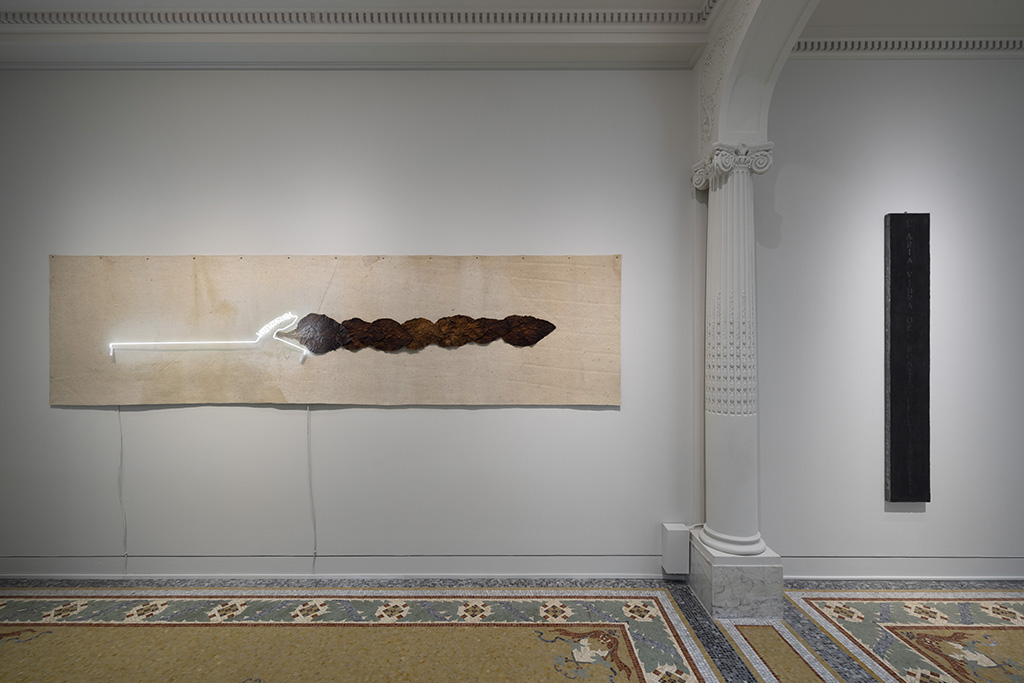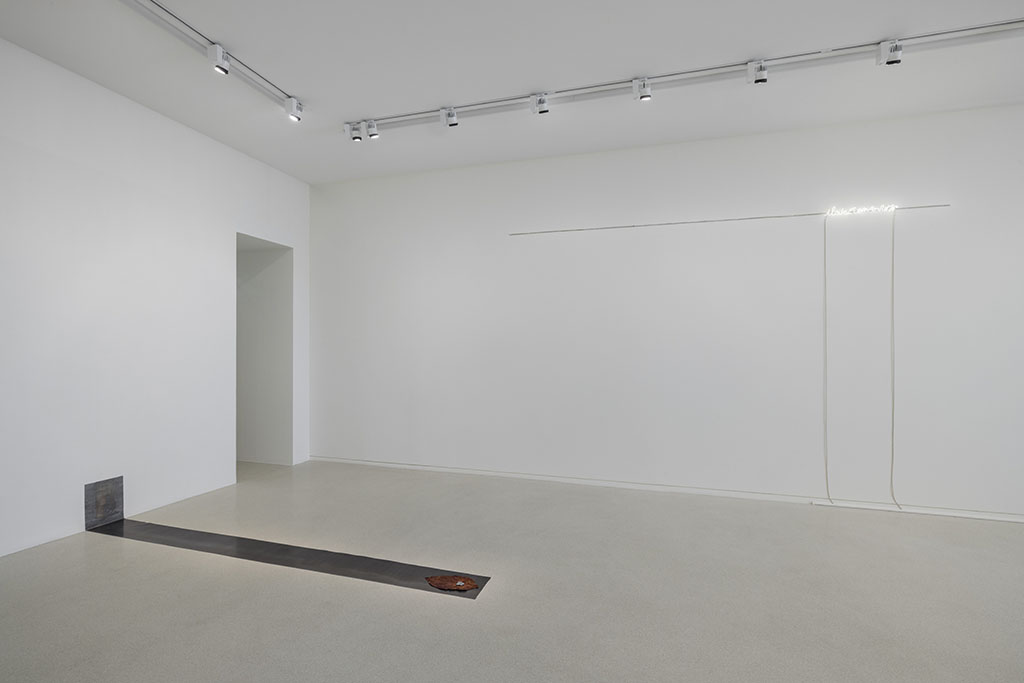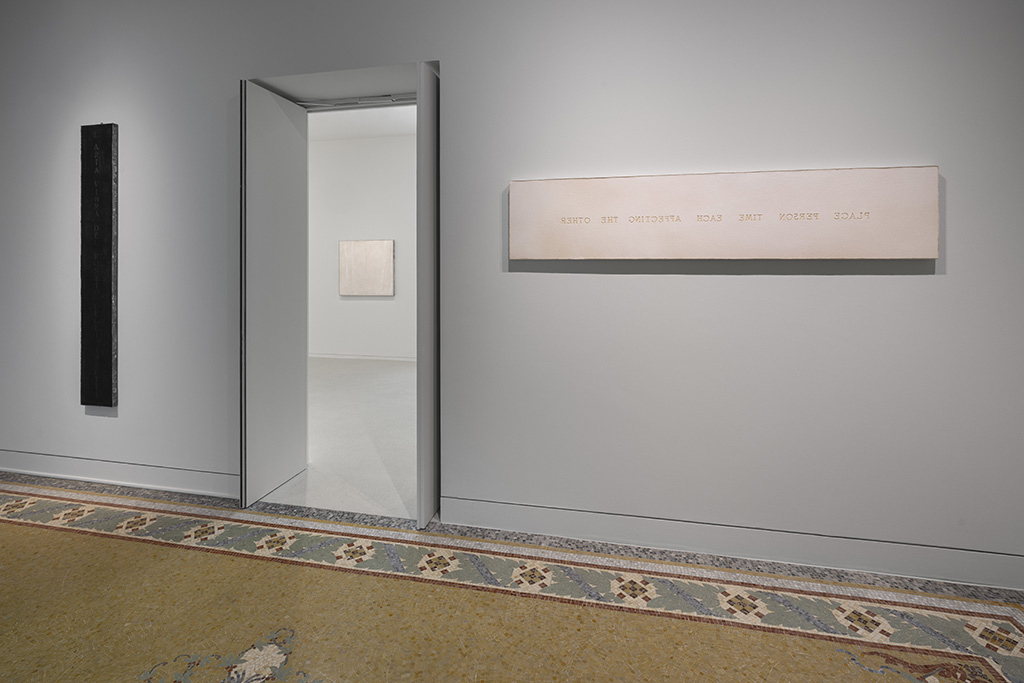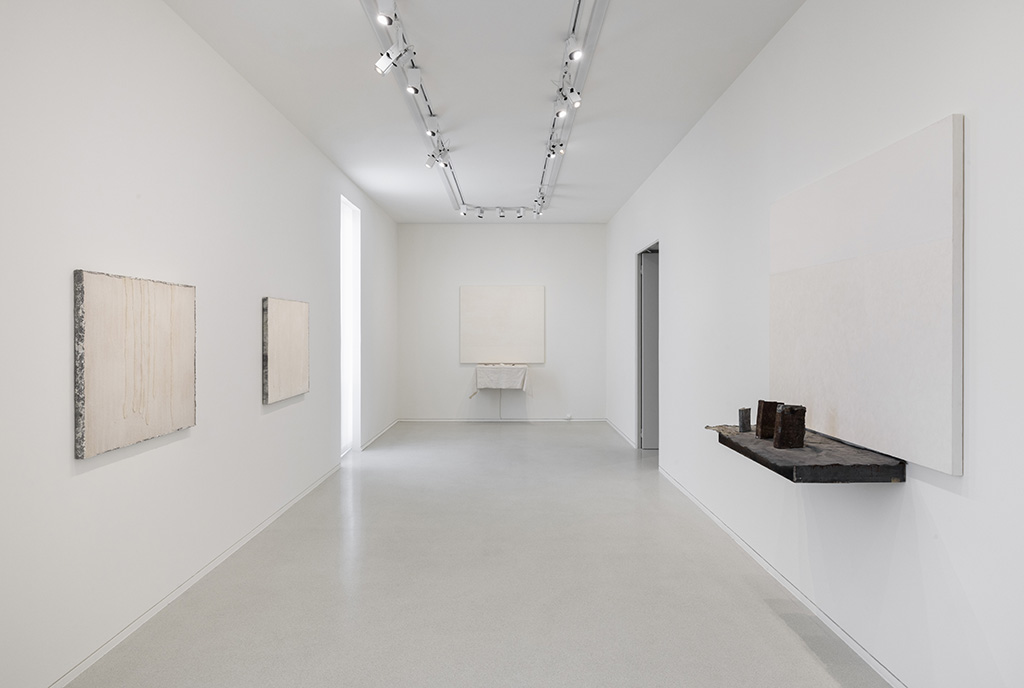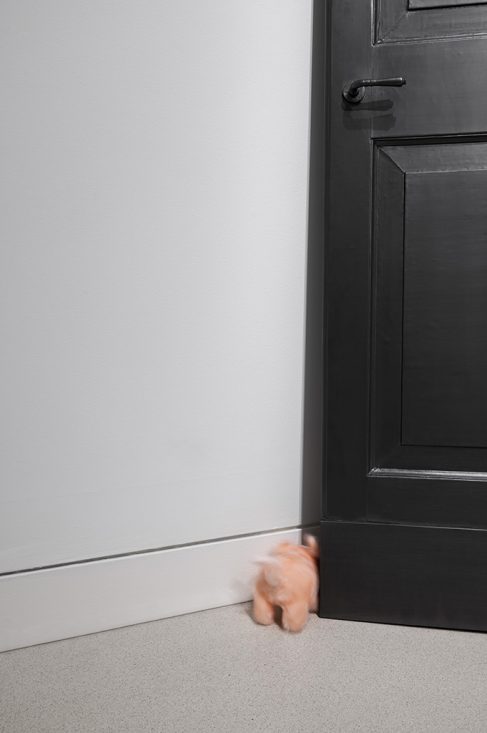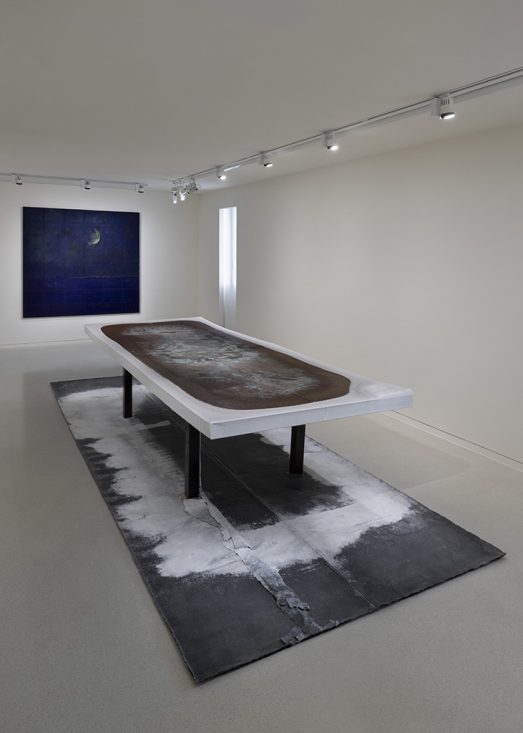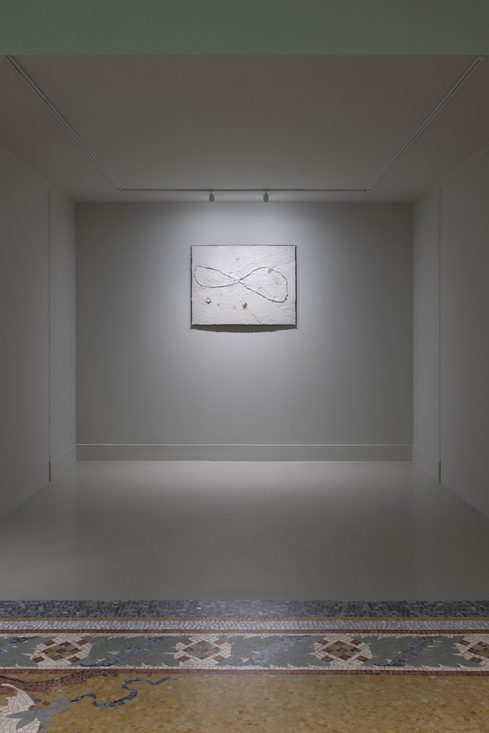Pier Paolo Calzolari – Casa ideale

Pier Paolo Calzolari
Senza Titolo (Porta), 2004
Wood, lead, plush, electric motor, transformer
293,2 x 110 x 14 cm
Private collection
Photo : Paolo Semprucci
© Pier Paolo Calzolari / Adagp, Paris
Pier Paolo Calzolari is known for the formal originality of his multi-faceted practice (painting and sculpture, but also performances he looks on as “acts of passion”), which has often made use of such organic materials as tobacco leaves, fire and frost to create “work-installations” that challenge the limits of contemporary art.
The exhibition at the Nouveau Musée National de Monaco brings together works he produced between the late 1960s and 2014. Titled Casa ideale (Ideal Home) after a “text-manifesto” written in 1968, and spread across Villa Paloma’s three floors, the exhibition plays on the codes of interiors, that is to say the codes of the personal that echo the existentialism of the artist’s production. Through such works as Luna (Moon, 1979) and still lifes produced in the mid-2000s that combine monochrome painting and sculptural elements, the exhibition shows that, since 1972, the Italian artist has tackled the most important questions raised by contemporary painting. He has developed a form of figurative and metaphysical abstraction, as illustrated by the installation Tiara con cera e chiodi (Tiara with Wax and Nails, 2006). The unique resonance of the materials in his work can be linked to the principles of transmutation used in medieval alchemy, and also to the hermetism of the esoteric writings of Hermes Trismegistus. Calzolari’s work is striking on account of its infinitely poetic nature, and surprising owing to its long-acknowledged ability to regenerate itself by constantly producing new images attuned to the demands of the contemporary world.
A retrospective exhibition, Casa ideale is a rare opportunity to discover the world of Pier Paolo Calzolari, an artist who has made his mark on art history through his customarily unconventional approach to the various practices in the visual arts.
The show is accompanied by a catalogue co-published by the NMNM and Humboldt Books, featuring exhibition views, an essay by Andea Viliani, an interview with the artist by Guillaume de Sardes, and texts by Valérie Da Costa, Didier Semin and Stéphane Vacquier.
Born in Bologna in 1943, Pier Paolo Calzolari now lives and works in Lisbon. His grandfather introduced him to traditional painting techniques when he was still a child. He later studied at the academies of fine arts in Bologna and Rome but did not complete his courses. He began his artistic career as a painter influenced by American “germinal” painting, before quickly turning to other, freer forms of artistic expression, such as installation, sculpture and performance art.
His production first came to notice in Italy in 1967 with his performance installation Il Filtro e Benvenuto all’Angelo (The Filter and Welcome to the Angel), which he created in his Studio Bentivoglio in Bologna. He rapidly became associated with Arte Povera, an Italian art movement of the 1960s and ’70s distinguished by its use of humble materials and its emphasis on the dimensions of ephemerality and process in art. He became internationally known with exhibitions in New York and Paris mounted by the Galerie Sonnabend. In 1972, he broke the boundaries of a period of art that he considered already finished when he produced a reflection on painting with his composite work Lasciare il posto, which combined monochrome painting, frosted sculpture, elements of still life, and performance art embodied by Calzolari’s physical and sonic presence.
Regularly exhibited around the world, Pier Paolo Calzolari’s works are held in leading private collections, foundations and museums, such as the Centre Pompidou in Paris and the Guggenheim Museum in New York. Today he is considered one of the most important and innovative artists of the post-war period. A major exponent of Arte Povera, Calzolari has been able to keep pace with the times. Today, at nearly 80 years of age, he continues to create works of disconcerting freshness and irony. He is rightly regarded as an influential figure in Italian and international contemporary art.


















